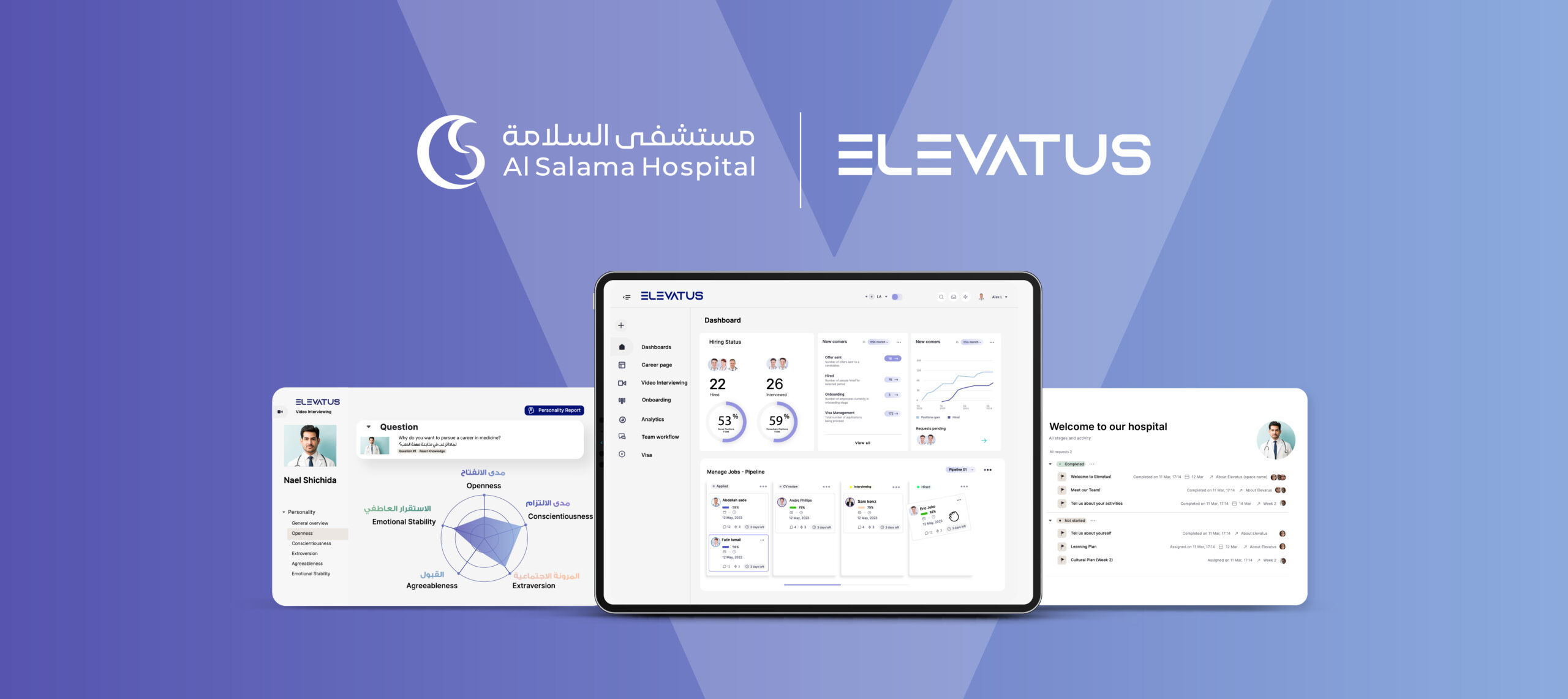
General
How to Build a Talent Acquisition Strategy Framework That Actually Works
September 21, 2022
Reem Al-Tamimi
Content Writer
The cornerstone of any company’s success lies in having skilled and proficient teams.
However, top talent won’t come knocking at your door looking for a job – you need to actively seek them out.
If you’re committed to seeing your company take its performance to the next level, then you need to build a powerful talent acquisition strategy framework.
Talent acquisition goes beyond hiring talent that meets your company’s needs. It goes as far as also considering the needs of the prospective employee. It tends to fail if it solely focuses on just hiring top talent – and sidelines what the potential employee’s needs may be. Worry not – we have great news for you!
Our awesome talent acquisition strategy framework will help you hire smarter and faster in the coming year. We have awesome tips, tricks, and tools you’ll need to make your recruitment goals come to life.
Ready to roll? Let’s get started!
So, what is talent acquisition?
Talent acquisition is the strategic process of finding, attracting, and hiring top-quality candidates who are the right fit for your organization’s culture, goals, and values. Think of it like a treasure hunt that involves some detective work, valuable clues, and a whole team to support you in the process!
Now you may be wondering: isn’t talent acquisition and recruitment the same thing? Well, far from it!
While talent acquisition and recruitment may appear to be synonymous terms – they are not the same. Talent acquisition focuses on a curated process that businesses rely on to identify the very best fit for their team. Companies that look to acquire the best talent for their teams often have talent acquisition specialists whose primary role is to source and identify candidates who have the skill set that the company needs to thrive and grow.
In all of these, the talent acquisition team develops a talent acquisition strategy framework that covers all the steps; from the inquisition to the retention of employees. This ultimately makes it a very delicate process, as missing out on important aspects of the talent acquisition strategy framework might result in a failed strategy.
Building a talent acquisition strategy framework: Key steps to remember


Talent acquisition is a multifaceted process that goes beyond merely selecting candidates from a talent pool or a stack of unsolicited resumes. It involves actively seeking out the most competent candidates, determining their ideal role within your company, and ultimately persuading them to join your team.
So, do you want to build an effective talent acquisition framework that attracts and retains top talent? Check out the following steps to help you get started!
Step 1: Analyze Data to Better Understand Your Canidates’ Needs
Traditional ways of recruiting usually rely more on luck than concrete data. Think of it more like a “Post and pray” method; haphazardly post a job vacancy and pray the best talent clicks on “Apply.” But will this work now with such a competitive job market? We’re afraid not!
When it comes to successfully recruiting and retaining talent, the first thing to do is to analyze your data to understand your future and current talent needs. The data you garner will fuel the strategies you develop and will help you be more effective in filling your open positions.
Understanding your existing data points and analyzing new ones is essential to developing a tailored recruitment plan that meets your requirements. This could include tracking employee turnover rates, job performance benchmarks, and skill gaps. By studying this data, you can get a more comprehensive view of your talent demand and, in turn, create a powerful strategy that will get your roles filled faster.
A good place to start is by exploring two key data points – employee turnover rate and job performance benchmark.
Employee turnover rate is a key indicator of how well people fit into the organization and how successful your recruitment strategies are. Analyzing this metric will help you identify any skill gaps that need to be filled and any weaknesses in your recruitment process.
On the other hand, job performance benchmarks measure the quality and quantity of work carried out by your team. Keeping track of this data will allow you to identify any existing issues regarding skill sets, processes, or overall team morale.
You should also collect additional data points such as interviewer ratings, diversity and inclusion insights, and recruitment cost-per-hire. This will give you the information you need to create strategies that are tailored to your specific talent needs.
Analyzing data is an essential first step in the talent acquisition process. It is the only way to truly understand the talent needs of your organization and to develop strategies to ensure their successful execution. By taking the time to evaluate this data and create a talent acquisition strategy framework, you’ll gain valuable insights that can help you create a recruitment plan that will positively impact your business.
Step 2: Re-Evaluate Your Hiring Process


As a talent acquisition specialist, the second step of your talent acquisition strategy framework recognizes the need for an effective hiring process. Therefore, step two of your talent acquisition framework should focus on re-evaluating your current processes. You want the best possible candidates for your company, and the only way to make that happen is to ensure that the people you are interviewing and screening are of top-notch quality.
More specifically, to re-evaluate your hiring process, start by looking at the current screening and interviewing procedures you use. A structured interview allows you to compare candidates, while a behavioral interview looks at the skills required to perform the role. Therefore, assessing both of these types of interviews is essential to make sure you are getting the best candidates for the job.
For example, if you are looking for a sales representative, it is important to make sure the candidate has the right sales mindset, that they have sufficient knowledge of the industry and that their communication skills are excellent. You want to make sure the suitable candidate for the job meets these criteria and has the ability to close deals.
Another factor to consider is the job assessment techniques. Offering a skills assessment test or e-learnings are both effective methods for evaluating potential employees. Such tests allow employers to assess the candidate’s experience and determine if the specific skills are met.
To sum up, re-evaluating your hiring process is a critical aspect of finding the best talent for your company. Look at the screening and interviewing process to find any potential weaknesses and opportunities in order to make the right hire. Also, evaluate job assessments to gather pertinent insights and make sure that the most suitable candidate is chosen.
Step 3: Make Good Use of Technology
When it comes to talent acquisition, there is no denying that the digital world is taking over. According to a study conducted by HR.research, the majority of organizations (65%) use 2 to 5 paid recruiting tools during the talent acquisition process. Therefore, step three of your talent acquisition strategy framework should focus on getting accustomed to using innovative technology. From using AI-driven tools to leveraging video interviewing, the advantages of embracing digital-first strategies are clear. A digital-first approach not only helps you to recruit faster, better, and more cost-effectively – but also gives you the capacity to find and hire the best talent regardless of location.
At its core, the digital-first approach to talent acquisition is focused on leveraging technology to make the recruitment process smarter, more efficient, and agile. There are numerous recruitment tools available to talent acquisition specialists that have the capability to transform your recruitment process and help you find the most suitable candidates more efficiently.
From applicant tracking systems to video interviewing software, there is a range of powerful digital solutions out there that will help you hire smarter than ever. Not only will these tools help you to save time and money during the recruitment process, but they will also help you to reach a much more diverse and global talent pool.
Step 4: Discover Exceptional Talent and Keep Them Engaged


As a talent acquisition specialist, you know the key to success is finding and recruiting passionate, exceptional employees. In this respect, the fourth step of the talent acquisition strategy framework should be focused on sourcing exceptional talent. The recruitment process can sometimes be long and cumbersome, but it’s one of the most critical stages of building a successful team.
Are you ready to discover and engage with the top talent that will take your organization to the next level? The fourth step of your recruitment process is crucial for this very reason! Here are some essential pointers that you should keep in mind while implementing the talent acquisition strategy framework. Let’s dive in and find the best candidates to elevate your organization together!
- Tap into your network: Your network is a great asset when it comes to finding ideal candidates. Don’t hesitate to tap into your connections with former colleagues, strategic partners, and professional networks to discover the right match.
- Utilize recruitment marketing: Leverage recruitment marketing tactics such as content creation and digital advertising to attract and nurture candidates.
- Use the right onboarding approach: Invest in an engaging onboarding process. Make sure your initial onboarding process is smooth, fast, and efficient in order to create a positive impression and automatic connection with new hires.
- Encourage ongoing engagement: Keep in touch with your new hires even after they start. Focus on professional development and rewarding long-term performance to build strong relationships and keep them engaged.
- Choose the right job boards: When it comes to posting jobs, focus more on quality than quantity. Look for job boards that are tailored to your industry or the specific talent pool you seek.
With the right mix of resources and techniques, you can find the perfect candidates who will make all the difference. Remember, the key to success for any business lies in recognizing, nurturing, and retaining exceptional talent. So, make sure you put your best foot forward in the fourth step of the talent acquisition strategy framework to attract and retain the cream of the crop. With a strong and well-executed plan, you can build a team of exceptional individuals that will take your organization to new heights!
Tips for creating a talent acquisition strategy framework that works
You now have a talent acquisition strategy framework, but do you want to take it to the next level? Here’s a set of great tips for you to rock your talent acquisition.


Gain visibility
Potential candidates need to hear about you if you want them to apply to your job openings. Both large and small businesses need to be their own biggest advocates. So be sure to showcase your culture with your network, post about it on LinkedIn, and give your employees a reason to be excited about working at your company. Visibility includes, but is not limited to, the searchability of your job postings on different job boards and getting involved in community events. Why? Simply because top talent might find it difficult to trust and work for a business they’ve never heard of.
Improve your company culture
Your company must have an identifiable culture of high performance. Candidates want to clearly know the benefits they will be gaining once they join your company. They also want to know more about the work environment and atmosphere. Values are great, but they are not enough to distinguish your company. Demonstrating your culture in action is key to building trust with potential employees. When you create a positive work environment, you’ll not only enhance your employer brand but also foster employee retention. So, showcase your company culture, and watch as the best candidates flock to your organization!
Level up with metrics and feedback
Data is a hallmark of modern talent acquisition. Unfortunately, it is frequently overlooked by many businesses. Data drives better business decisions. Ultimately speaking, metrics will help you to measure the financial costs, efficiency, and candidate experience. For example, an intuitive hiring platform like EVA-REC intelligently provides advanced analytics and reports in one visually appealing dashboard. In seconds, recruiters can instantly view all the data related to their jobs, how long they’ve been open, and how many candidates they’ve attracted. This way, recruiters can easily pinpoint any bottlenecks or gaps that exist in their talent acquisition strategy.
Personalization
Qualified candidates prefer a personalized hiring process, from the application to the onboarding process. You can leverage a hiring platform to automate and personalize communication with candidates across their favourite channels. Whether it be via phone, email, SMS messages, or social media. As soon as you move a candidate from one stage to another in the hiring process, they will automatically receive a personalized message informing them of the next steps. This will keep the candidate in the loop at all times, enhance the candidate experience and improve your talent acquisition strategy.
Test new technologies


While the HR department is still ravishing the introduction of user-friendly ATS, a slew of new technologies have arisen to aid talent acquisition – such as AI-powered resume parsing, interview scheduling technology, chatbots, video assessments, and more. Therefore, it is essential to stay on top of talent acquisition trends to remain relevant and modernize your talent acquisition strategy framework. But be sure to pilot, test, and learn about the new technology prior to investing in it.
Final words
So, there you have it. By following these steps and tips, you’ll be well on your way to creating a fantastic talent acquisition strategy framework and hiring smarter in 2023. Just remember to always stay ahead of the digital curve and stay in touch with the latest trends and technologies to keep your strategy agile and successful!
Turn top talent to employees fast
Hire, assess, onboard and manage top talent for every job. See how Elevatus streamlines everything; from acquire to new hire.
Request a demoAuthor
Reem Al-Tamimi
Don't miss a thing!
Stay one step ahead. Subscribe and get the latest updates, news, and insights from Elevatus straight to your inbox.







